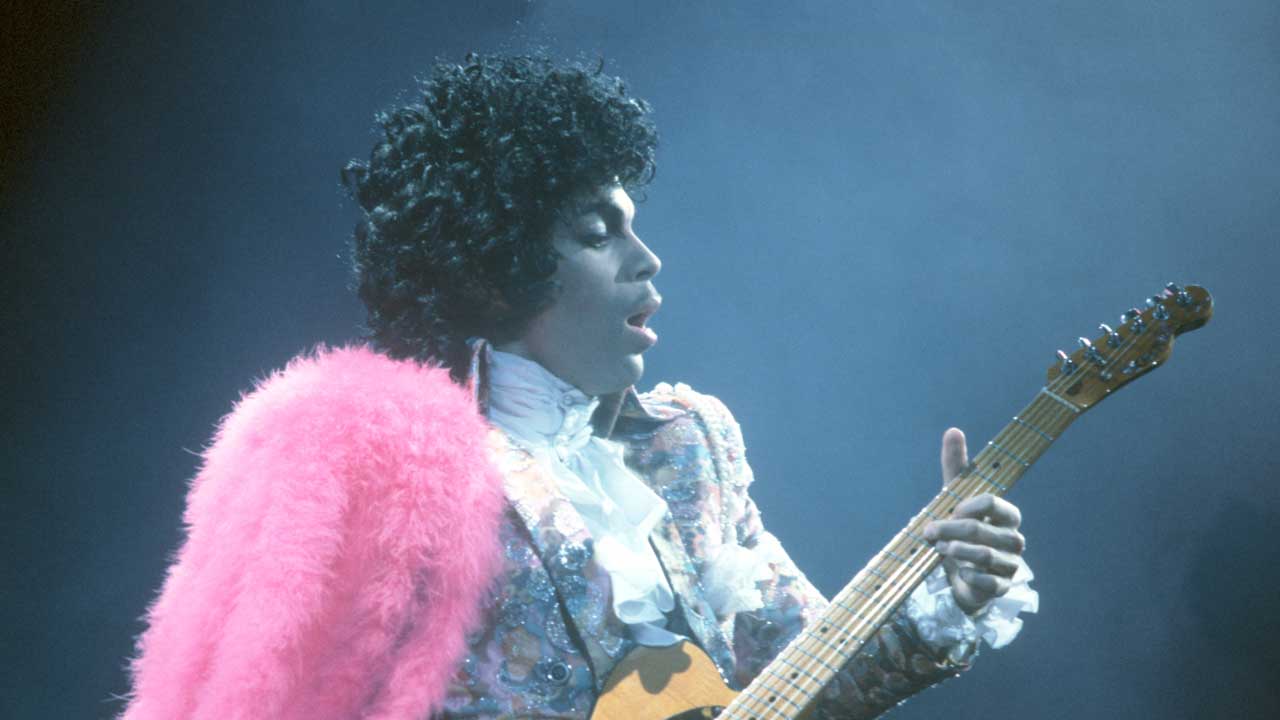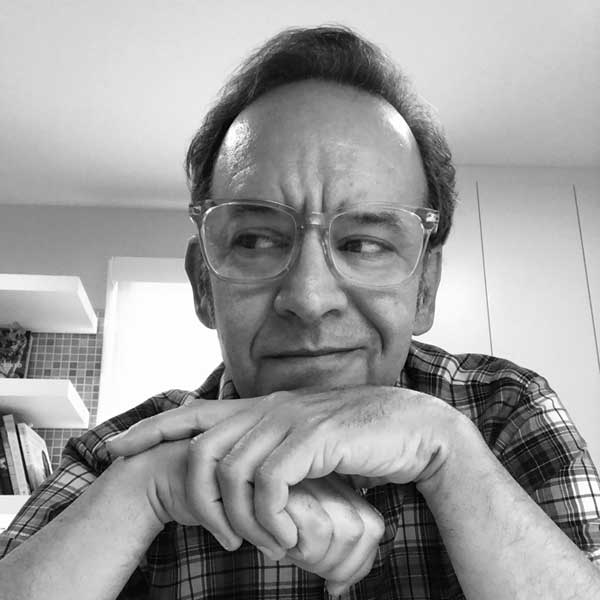It’s 30 March, 1985. A single low organ note rumbles in the cavernous, lighter-lit dark of the Carrier Dome, as a voice says: “Hello Syracuse and the world… my name is Prince, and I’ve come to play with you!”
Thousands of purple flower petals tumble from the ceiling, laser-sharp beams sweep through plumes of smoke, and the curtain rises to reveal Prince And The Revolution in comic-book-hero silhouette, kicking into the opening bars of Let’s Go Crazy. And the fans are doing just that. Not just the 38,000 in the venue, but millions more around the world who have tuned in to one of the first ever pay-per-view concerts. Released recently as a live album and Blu-ray, Prince And The Revolution: Live can still plug the members of the Revolution right back into the visceral thrill of it all.
“After not seeing it for a really long time, I thought: ‘Wow, what a great band that was!’” says guitarist Wendy Melvoin. “Syracuse was a ‘hit it and quit it’ kind of show. Basically, we were following the contours of the movie on stage. But the full force of it is pretty evident when you watch. The energy level is on eleven the entire time, from the beginning to the very end.”
“There’s a kind of sweet spot when you’re touring and you’ve been out for a couple months and you really have it down,” says keyboard player Lisa Coleman. “That’s what you’re seeing. On top of that, it was a special occasion with its own allure, being one of the first concerts beamed worldwide.”
The beginnings of the tour, and what drummer Robert ‘Bobby Z’ Rivkin calls “the whole Purple Rain era”, date back to August 1983, when Prince And The Revolution played a hometown gig at the First Avenue Club in Minneapolis.
“We started recording the album right there, then moved into the movie rehearsals, then tour rehearsals,” Rivkin says. “It all ran together. And there were a lot of cooks in the kitchen to make this thing as good as it could be: stage design, lighting, costumes, so many details to attend to. For Prince, who liked to move fast, it was frustratingly slow. But really, Purple Rain – the album, the movie, the tour, the whole three-year saga – became this diamond because of the pressure of time.”
The all-day, all-night rehearsals for the tour were famously gruelling, with Prince setting a very high standard for stamina and “you should never have a free hand” stage presence. As he told Rolling Stone in 1985: “I swear to God it’s not out of boldness when I say this, but there’s not a person around who can stay awake as long as I can. Music is what keeps me awake. There will be times when I’ve been working in the studio for twenty hours and I’ll be falling asleep in the chair, but I’ll still be able to tell the engineer what cut I want to make.”
“I loved that discipline,” says Melvoin. “It made me feel like I wasn’t, excuse my language, fucking around. That felt really good to take it so seriously, especially at such a young age. I was only nineteen. We videotaped every rehearsal we did. And there was a board mix of every day we rehearsed. Prince would listen back and watch and we’d make adjustments.”
“It was all part of becoming a band,” says Coleman. “I thought it was great having that kind of work ethic, because it really gave you such power when you’re on stage when you’re not having to think about what you’re playing.” Rivkin adds: “There’s an old expression: ‘Pain is temporary, but tape is permanent’ [laughs]. Nothing in music to Prince was throwaway. Every note mattered. He couldn’t stand music that wasn’t informed. So these were excruciatingly worked on, labour-intensive rehearsals – they were seriously PhD courses in rock’n’roll."
When the five-piece band (including Matt Fink on keyboards and Brown Mark on bass) graduated to the opening seven-night stand at Detroit’s Joe Louis Arena, they were, as Melvoin says, “a well-oiled machine”. These were the first of 98 sold-out dates packed tightly into the next six months, all carried along by a convoy of 14 trucks, 10 buses, two planes and a road crew of 100. “We were a city on wheels,” says Coleman.
But increasingly, Prince began to keep himself separate from his band, as he glimpsed a new level of fame that would come to rival that of Madonna, Michael Jackson and Bruce Springsteen to define the 1980s.
“The thing of Prince travelling separately really started on the 1999 tour,” says Rivkin. “When he was on the same bus with us, he would put in the show tape and never stop analysing it. I remember one night he woke me up at four in the morning in my bunk and said: ‘You missed a cymbal on Delirious.’ So I told his manager: ‘He’s a rock star now. Get him his own bus’ [laughs]. On the Purple Rain tour he pulled away further. Things just got more chaotic and there was less time for the camaraderie of being in the band.”
“It was probably a form of self-grooming for superstardom,” Melvoin reckons. “The more mysterious, more enigmatic, more untouchable one – he started acting that part. And I think his management encouraged that kind of behaviour. It’s not that he didn’t want to be around us. It was a direct result of being busy and reaching heights that he’d been goal-oriented towards.”
But the band reconnected with their leader during the epic afternoon sound-checks that would precede every show.
“It was called ‘sound-check’ and I think the sound guys got a sound out of us, but we would go on for three or four hours,” Coleman says with a laugh. “We would get there and just start jamming. Or Prince would already be there with a drum machine going and playing a bass, and he’d look at us to come and fall in.’”
The sound-checks were also a therapeutic playground for Prince, who later said that the repetition built into the tour “nearly made him have a nervous breakdown”.
“His restlessness all came out in those soundchecks,” says Rivkin. “He would alter certain things about the show, add new parts, even write new songs, all to keep himself from going crazy. You have to realise too that the next album, Around The World In A Day, was already recorded and mixed before we even started this tour. So he was already on to the next thing before we even set foot on stage.”
After the sound-checks it was, as Coleman puts it: “Hurry up and get ready to get back on stage.” Prince’s longtime make-up artist Robin Lynch had her routine down so well that she’d sit him and the five band members down together and move from chair to chair.
“She could get us all done in an hour and a half,” says Melvoin. “Normally, those kind of things take an hour and a half per person. It became second nature to her. We had four costume people who were set up in black tents on either side of the stage. You’d run off and they’d be ready to change you. It was boom-boom-boom, and off you’d go.”
Once dressed, they’d assemble for an important pre-show ritual. Rivkin explains: “We’d all gather in Prince’s dressing room, in a circle, and either he would speak or he would point to one of us and we would speak of the night. I can remember everybody seemed to rise to the occasion and had very inspiring words against the backdrop of twenty thousand screaming people waiting for us. There was always that final moment of togetherness before we hit the stage. We didn’t ever just go out there without first connecting to each other and looking in each other’s eyes and Prince checking us out and us checking him out.”
As you watch the Syracuse show you can feel that connection infusing every aspect of the magic on stage. The airtight snap of the grooves, the whisper-to-a-scream dynamics, the telepathic interplay between the players, the choreographed dance moves, all powered by Prince’s million-watt charisma and aerobic moves.
“Prince was our conductor,” says Coleman. “We took our cues from him. He spoke a lot with his face. You had to rely on that a lot. A lot of the time he can’t control it, so you learned what was pleasing to him and what frustrated him. And then he did like the ugly funky face when you did something he liked [laughs]. That was always a good high.”
“I had the best seat in the house,” says Rivkin. “I watched Prince like a hawk. You’d get so much from his movements – tempo, feel, groove.”
Forty years later, the waves of Prince’s unmatched brilliance with The Revolution can still be felt. They’re present in so much pop music, from Lady Gaga to Harry Styles to Mitski. And the performances, especially from the Purple Rain tour, remain as benchmarks for any band that sets foot on an arena or stadium stage.
And he’s ever-present in the lives of his former bandmates. Wendy Melvoin and Lisa Coleman, celebrating forty years together as a team, are currently composing music for television shows Firefly Lane, Cruel Summer and Hospital.
“We still talk about him all the time,” says Melvoin. “As we’re writing, we’ll play something and the two of us will look at each other and go: ‘Prince would’ve loved that.’ That happens a lot.”
Robert Rivkin, who remains active as a drummer and is also a curator of playlists for major streaming services, says: “He was the most important character in my life. In death, it’s the same thing. He’s part of my night and day dreams. And the Purple Rain era was a beautiful time, intense and creative. Prince lived and breathed the music, and we were right there with him."
Prince And The Revolution: Live is out now on album and Blu-ray via Legacy Recordings.

